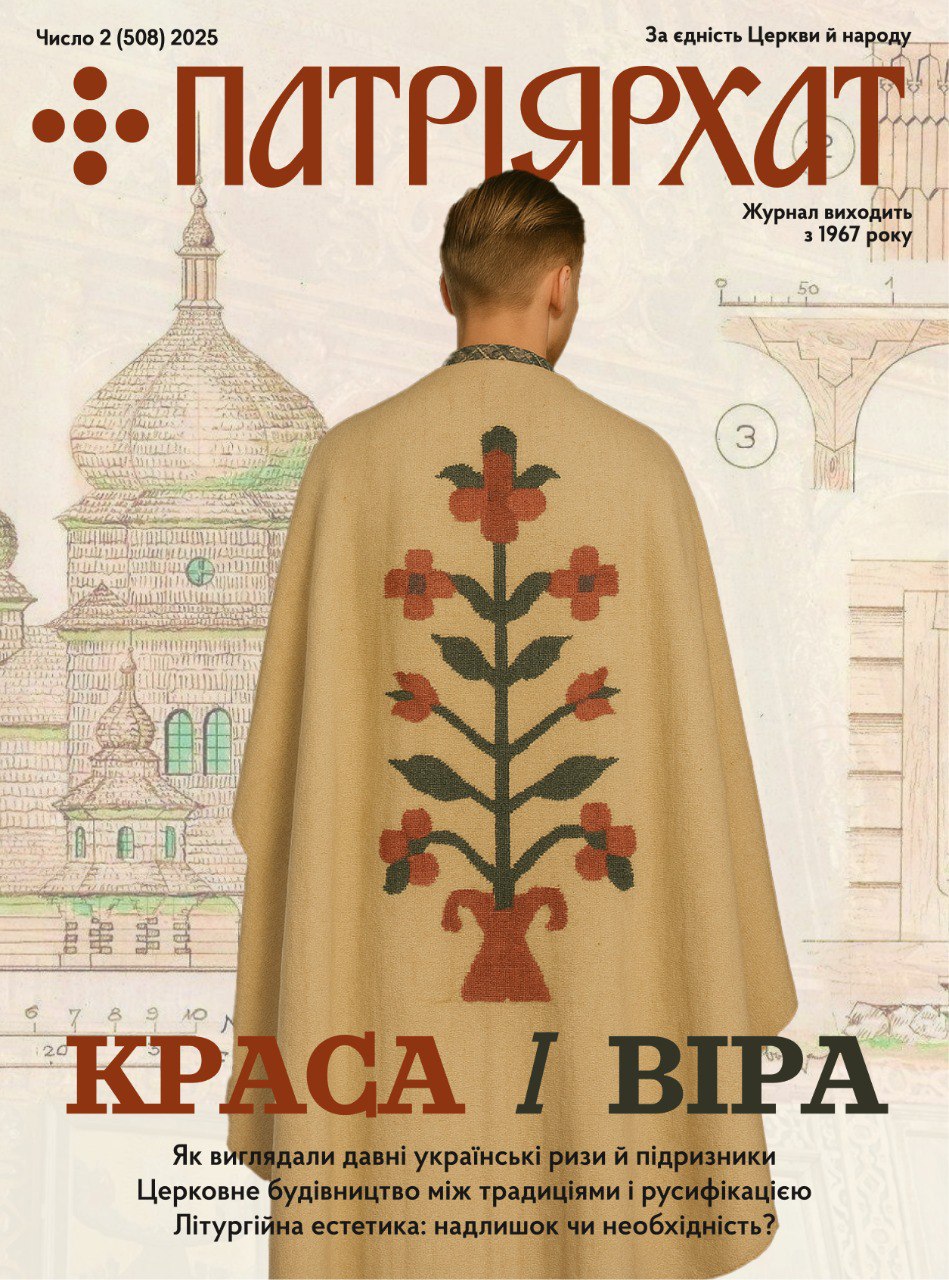Pascal Bastien
In the Byzantine tradition, the myriad readings of the Paschal vigil culminate with these words from Our Lord: “Go therefore and make disciples of all nations, baptizing them in the name of the Father and of the Son and of the Holy Spirit, teaching them to observe all that I have commanded you” (Matthew 28:19-20). At Divine Liturgy, on the morning of Pascha, following a widespread custom evocative of Pentecost and transcending human boundaries, the prologue of the Gospel of John is proclaimed in a multitude of languages. The Resurrection and the Great Commission, the liturgy teaches us, are intrinsically tied. The Church is missionary by her very nature [1].
The Ukrainian Greco-Catholic Church (UGCC) is one of 24 particular Churches which, in the words of Lumen Gentium, [2] offer together “splendid evidence of the catholicity of the undivided Church” and “must carry out (the solemn mandate of Matthew 28) to the ends of the earth.” The UGCC is in fact the second-largest Church sui iuris after the Latin Church, and hence the largest Eastern Catholic Church. Like all Eastern Churches, it is permeated by a strong cultural heritage: it bears the beautiful marks of Kyivan-Rus, transformed by the Christian Faith, in a process known as inculturation. Everywhere the Gospel was preached to new peoples, from apostolic times, it was inculturated. Already in the Book of Acts, we are given the example of St Paul’s heed of the Athenian Unknown God and of the writings of the Stoic philosophers (Acts 17:23-28). There is a place for a genuine cultural or ethnic distinctiveness even within the Church, insofar as it serves the Gospel. The Eastern Churches, rooted in a specific history often replete with martyrdom, exemplify ethno-cultural specificity and cherish particular traditions of theology, liturgy, spirituality and canon law [3].
The purpose of this inculturation is manifold – but as it is abundantly clear in Redemptoris Missio [4] – its main focus is to facilitate the Church’s missionary role. It is thus of significant concern when inculturation, good in and of itself, turns into an excuse to dampen missionary spirit. It may even cause one to ask whether the Church can fall prey to phyletism, a distorted vision according to which a particular Church’s mission is concerned “with the destiny of a single nation or a single race” [5] and not the whole world.
The term phyletism was coined as a heresy at the pan-Orthodox Synod of Constantinople in 1872 and targets a central problem of modern Orthodoxy, in both historically Orthodox lands and the New World. The true nature of the climactic events that have unfolded this month between the Patriarchates of Moscow and Constantinople is unequivocal.
Catholics may feel they are immune to this error. Indeed, in one sense, the Catholic Church can be esteemed as a “community broader than the largest nation-state, more pluralistic than any culture in the world”. Ultimately, this is true because we Christians belong to the “new humanity” wherein, through baptism, we are “members of the household of God … Christ himself being the cornerstone.” (Ephesians 2:11-22)
The full ramifications of this teaching are difficult to fathom. Furthermore, they are difficult to accept for those who adhere to a certain ethnic exclusivism, not uncommon among persecuted peoples, and not uncommon among persecuted Ukrainians. What cannot be forgotten in the midst of ethno-political turmoil is that the “Ukrainian Catholic Church” can never mean the “Catholic Church for Ukrainians” – for if it were truly “for Ukrainians”, it would have had to abandon the Great Commission and cease to be a Church at all, a fortiori Catholic.
This misconception does not simply affect the descendants of Sts Volodymyr and Olha. The Annuario Pontificio, an annual directory published by the Holy See which lists all the Catholic dioceses and bishops of the world, contains the name of the recently created UGCC eparchy in France: Eparchia Sancti Vladimiri Magni in urbe Parisiensi pro Ucrainis ritus Byzantini – “Eparchy of Saint Vladimir the Great in the City of Paris for the Ukrainians of Byzantine Rite”. Two words in that name – pro Ucrainis – are especially problematic and destructive to the missionary spirit. Such a name restricts the mission of the UGCC in France by implying the people of all nations living on French soil are not to be served and evangelized, but only those of Ukrainian nationality. Such a name impedes the ability of the UGCC in France to transmit the faith to children in particular – because with their integration into French society, children will disengage from a Church meant only for Ukrainians. Such a name caters to those in leadership who do not wish to push themselves beyond their cultural or linguistic comfort zone. More fundamentally, such a name in the directory satisfies those for whom “the blood of tribalism (runs) deeper than the water of baptism” [6].
One would expect an internal consistency within the Catholic Church in the naming of dioceses and eparchies, but instead, Latin dioceses within the traditional territory of the UGCC, such as the Archdiocese of Lviv, are not defined as “pro Latinis” but “Latinorum”. The use of the genitive here is meant to indicate which Church sui iuris the diocese belongs to, but rightly refrains from curtailing its reach and missionary activity.
In his letter to Major-Archbishop Sviatoslav Shevchuk on the occasion of the funeral of his predecessor Lubomyr Cardinal Husar, Pope Francis made numerous references to ethnicity. He ended with the words “Upon all of you, beloved Ukrainians, in the country and in the diaspora, I invoke abundant heavenly blessings” [7]. Can this be the language of the Church? Can the faithful of the Church of Kyiv be referred to as “beloved Ukrainians”? By borrowing, within the Church, the secular notion of ‘diaspora’, is it not implied that the Eastern Catholic faithful are not at home outside the borders of their spiritual forefathers and do not make up the ‘local Church’, capable of ministry wherever they find themselves[8]. These words, well intended though they may be, isolate Eastern Catholics into an ethnic ghetto.
The time has come for a clear Catholic condemnation of phyletism, which conflates Church and nation. This would include, of course, a correction of the Annuario Pontificio, but more importantly should be accompanied by a renewed awareness of the central place of Evangelization in Christian life for clergy and for laity. Our sense of Christian identity should be restored in light of Holy Scripture. The Epistle to the Ephesians and with it the Epistle to Diognetus [9] are abundantly clear: “Christians are distinguished from other men neither by country, nor language, nor the customs which they observe (…). Every foreign land is to them as their native country, and every land of their birth as a land of strangers.”
If we make ours the hopes of Orientalium Ecclesiarum, “that (the Eastern Churches) may flourish and with new apostolic vigour execute the task entrusted to them” then we will rejoice at these words of His Beatitude Sviatoslav, primate of the UGCC: “The Ukrainian Greco-Catholic Church is not a Church made up solely of ethnic Ukrainians (…). It is a Church that comes from the Ukrainian people, but it is a Church that is for the entire human race” [10]. It is my prayer that this same message can resound loudly from the Holy See, from our bishops throughout the world, from all our ordained ministers, and ultimately become a living reality for all the faithful.
* * *
Pascal Bastien is a specialist physician in North York and a lecturer at the University of Toronto. He is married, with two young children. He is a layman and belongs to the UGCC.
[1] Decree Ad Gentes on the Mission Activity of the Church, par. 2, Council Fathers, 1965.
[2] Dogmatic Constitution on the Church Lumen Gentium, par. 17 and par. 23, Pope Paul VI and Council Fathers, 1964.
[3] These four categories are listed in three Vatican II documents as constitutive of a particular church. See Lumen Gentium, par. 23; Unitatis redingratio, par. 17; and Orientalium ecclesiarum, par. 3.
[4] Encyclical Redemptoris Missio, par. 52, St John Paul II, 1990.
[5] Course of Canon Law — Appendix VI — canonical glossary. Grigorios Papathomas, 1995.
[6] Thinking Theologically about Identity and Allegiances: Parables of a “New We”, Beyond the Borders of Baptism: Catholicity, Allegiances, and Lived Identities, E Katongole, 2016.
[7] Condolences Upon the Death of Major Archbishop of Kyiv-Halyč, Pope Francis, 2017.
[8] Liturgy in the Life of the Eastern Catholic Churches: Theory and Practice in Europe and North America, Louvain Centre for Eastern and Oriental Christianity, D Galadza, 2016.
[9] The Epistle of Mathetes to Diognetus, chapter 5.
[10] Speech of His Beatitude Sviatoslav at the Institute Metropolitan Andrey (Sheptytskyi) (Canada, Toronto, May 2, 2014)

